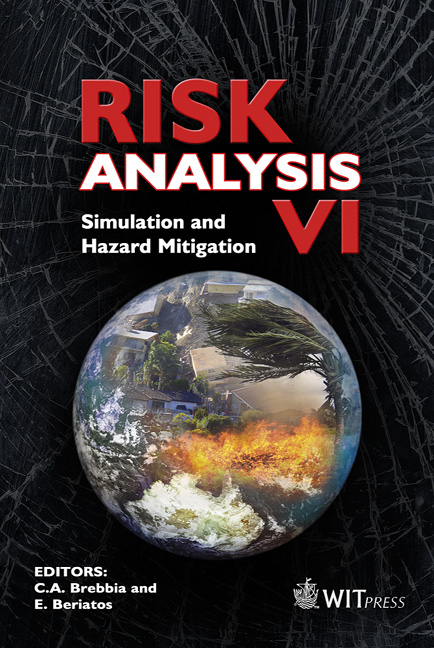The Prediction And Mapping Of Coastal Flood Risk Associated With Storm Surge Events And Long-term Sea Level Changes
Price
Free (open access)
Volume
39
Pages
10
Page Range
129 - 138
Published
2008
Size
2748 kb
Paper DOI
10.2495/RISK080141
Copyright
WIT Press
Author(s)
T. Webster & D. Stiff
Abstract
Non-specialized researchers, emergency management personnel, and land use planners require an accurate, inexpensive method to determine and map risk associated with storm surge events and long-term sea level rise associated with climate change. This study has developed new geomatics tools to map flood risk and has been applied to a case study area in the Minas Basin, Bay of Fundy, Canada. The Minas Basin has the highest recorded tides in the world and agricultural and rural development has been established along the coastline behind dykes, which are up to 3 m high. A newly developed ArcGIS tool, Storm flood, in conjunction with a newly developed software program Water Modeler, and a LiDAR derived Digital Elevation Model (DEM) were used together to map coastal flood risk. Storm flood uses the LiDAR derived DEM as a base and calculates the area of inundation assuming a still water level. The tool also ensures that connectivity is enforced so that the storm surge waters are sourced from the ocean and that low-lying inland areas that do not have free connection to the ocean are not inundated. This \“connectivity check” overcomes a limitation of some standard third party hydrologic modelling tools such as HEC-RAS that do not check for connectivity to source waters that in some cases cause the resultant inundation maps to be incorrect when imported into a GIS environment. The recurrence intervals of a given water level are determined using Water Modeler by using the time series of local tide gauge records. Relative changes in sea level associated eustatic conditions, from climate change, and local crustal motion can be incorporated into the software to calculate the return period of water levels in the future under variable conditions Keywords: storm surge, flood risk, LiDAR, GIS, Water Modeler, return periods.
Keywords
storm surge, flood risk, LiDAR, GIS, Water Modeler, return periods.





